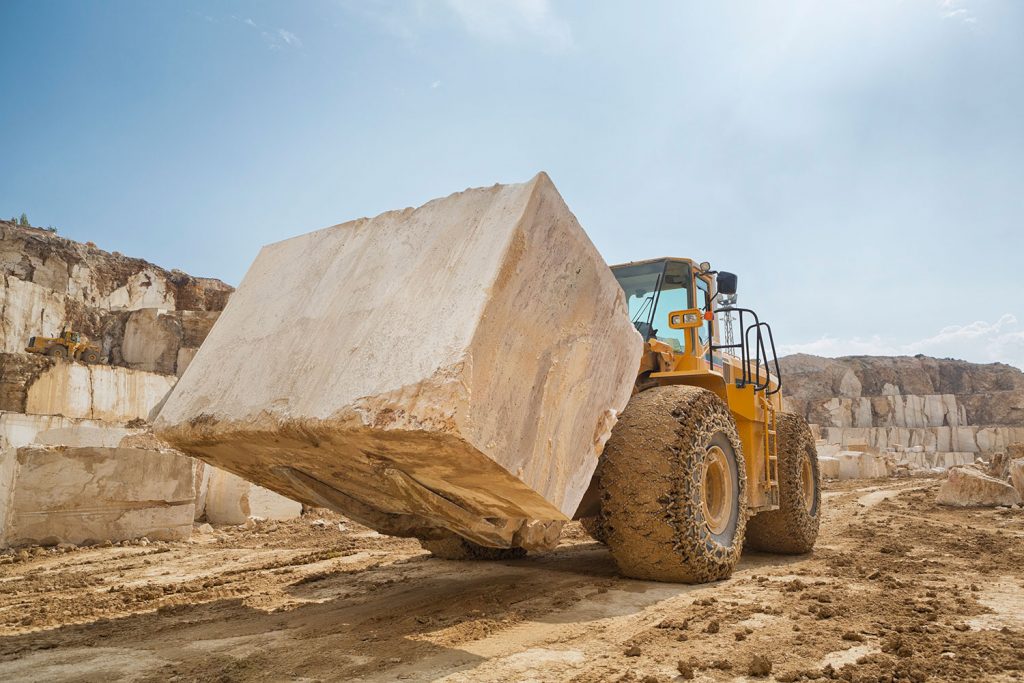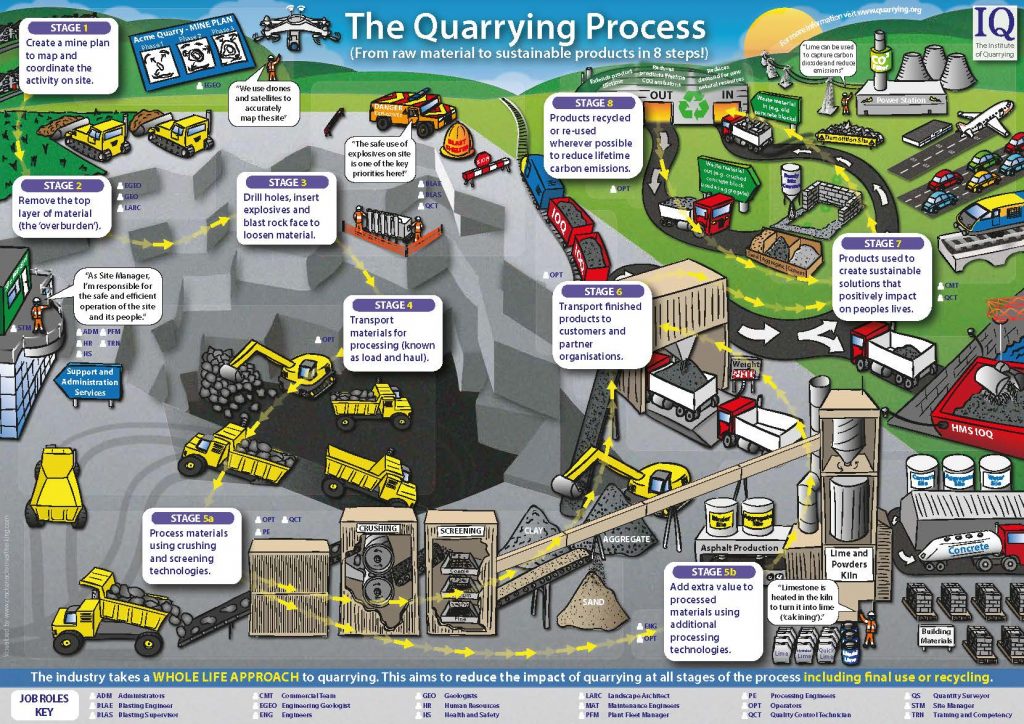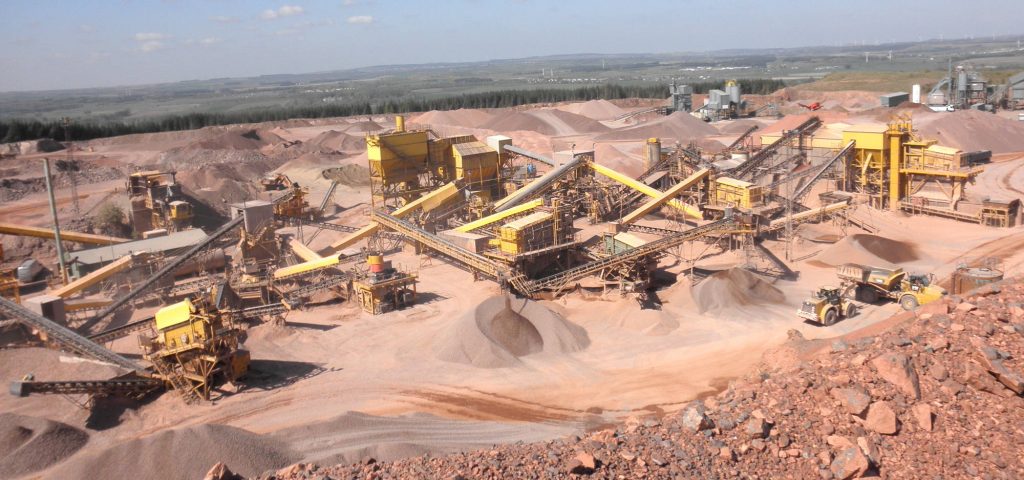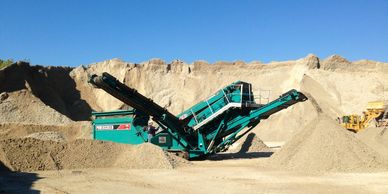Quarrying was first used by ancient Egyptian’s thousands of years ago to build pyramids with huge limestone and granite blocks cut by hand from local quarries. These days, quarries are used to extract stone, sand, gravel, limestone, granite, or minerals from the Earth’s surface. Within the UK, the largest quantities of mineral extracted by quarrying is used for construction and are known as aggregates, with UK quarrying alone equating to an £18 billion annual turnover. Currently, China is the biggest producer of aggregates, accounting for over 40% of the total market.
What is quarrying?

Not to be confused with mining, quarries produce aggregates used for construction. Both incorporate the extraction of different minerals, however they have different processes and methods, with different tools and machines used for their jobs. There are various quarry machines used throughout the process. Quarries are an essential to everyday life, materials extracted are used to build roads, footpaths, bridges and structures around the world. The majority of our built environment is formed from raw materials extracted from the earth’s surface.
The quarrying process

Stone quarrying is the multistage process by which rock is extracted from the earth and crushed to produce aggregates, which is then screened into the sizes required for immediate use, or for further processing, such as coating with bitumen to make bituminous macadam (bitmac) or asphalt used for road construction. The process of extraction to aggregate depends on the material that is being quarried, however similar steps are usually followed across all materials.

The first step of the process begins with a survey of the quarry face. The quarry should have ample resources available for extraction, but also in an area that’s easily accessible so that materials can be transported away from the site. Setting up a quarry is an extensive process that needs to be planned carefully to ensure the quarry will not adversely affect the environment or surrounding community.
To begin the development of the quarry, an explosives engineer will assess the site to determine and design the blast spot and where the shot holes should be drilled so that the blast can be undertaken safely and efficiently. After this has been established, a drilling contractor will arrive to begin drilling the number of shot holes required and in the correct positions corresponding with the blast plan.
After the shot holes have been examined, the controlled explosion will then take place. A single blast can fragment up to 60,000 tonnes of rock! Next, the area is inspected to ensure that all shot holes have fired correctly and it is safe to begin extraction. Dumper trucks are then loaded to take the fragmented rock to the crushers.

Crushing takes place in three stages: primary, secondary and tertiary. Primary crushing is usually completed with a Jaw Crusher which consists of a heavy metal plate that alternates back and forth against a fixed plate, that crushes the rock down into smaller pieces until it filters through the base of the crusher. The output from the primary crusher is conveyed onto the primary stockpile, from which the secondary crusher is fed.
Between the primary stockpile and the secondary crusher, there is usually a double deck Screener that is used to screen out smaller crushed stone and dust onto binding stockpiles. The secondary crusher is commonly a Cone Crusher and is used to reduce the size of the aggregate into specific sizes used for different purposes. A Cone Crusher is slightly different to a Jaw Crusher, as the mechanism gyrates the material to decrease the size. Stone is fed in at the top and crushed product falls out from the bottom of the cone. The mantle can be raised or lowered within the concave, allowing the gap, and therefore the size of the crushed product, to be varied to a limited degree. Smaller sized rocks then pass through another screener, and then through a tertiary crusher (usually an Impact Crusher) which is used to improve the shape and size of the rocks. From this, the rocks are screened and graded into 6 or 7 standard industry sizes. One of the most important aspects of any construction material in the quarrying industry is the grading, as it enables to material to be compacted easily and provides a dense product.

Final screens are usually mounted in a screen house over large bins/hoppers into which the different sizes of aggregates are fed through the machine. The hoppers are raised so that trucks are able to manoeuvre under them to be loaded with the end product. At this stage, the material is continually drawn from the bins to either be used immediately or to be transferred to stockpiles across the quarry which will be used at a later date.
Omnia Machinery should be your first port of call when purchasing used quarry equipment. We are a trusted machinery trader that stock quality used plant machinery to cover each stage of the quarrying process from Crushers, Screeners, Dumpers, Rock Drills and more. We offer competitive pricing and worldwide shipping on all machinery. We help our customers before, during and after the purchase of your equipment enabling you to buy in confidence. Get in touch for a quote!
